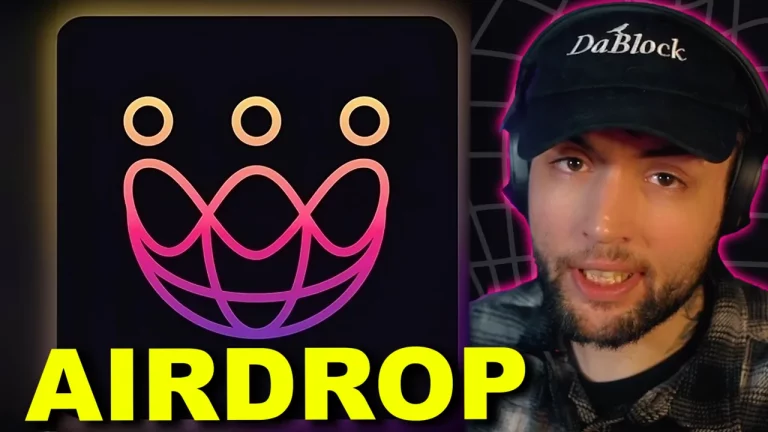In a recent post shared on the Scytale Digital blog, they give us an approximate date for the launch of JAM. In July 2025, the highly anticipated launch of JAM (Join Accumulate Machine) is expected to usher in a new era of blockchain technology within the Polkadot ecosystem. Although it is normal to see delays in these launches, so take the date of July 2025 only as a reference.
The initiative, spearheaded by Polkadot founder Gavin Wood, has already sparked considerable interest within the blockchain community. With an impressive prize pool of 10 million DOT tokens and 100,000 KSM tokens—valued at over $60 million USD—up for grabs, developers worldwide are gearing up to participate in the JAM Prize competition, aiming to create robust client implementations that enhance Polkadot’s network resilience.
The launch of JAM represents a significant leap in Polkadot’s ongoing evolution, pushing the boundaries of what blockchain technology can achieve. For years, Polkadot has been at the forefront of decentralization, interoperability, and scalability. However, JAM is poised to take these capabilities to the next level by offering a more flexible and efficient infrastructure layer, moving away from the rigid limitations of parachains and fostering a more seamless integration for developers.
The Vision Behind JAM: A Decentralized Future
Polkadot has always aimed to build a truly decentralized and resilient blockchain network, but the path to achieving that vision has not been without challenges. The introduction of JAM is a direct response to some of the hurdles faced by developers and users within the current blockchain ecosystem. One of the main issues Polkadot has identified is the need for a more flexible platform that allows developers to build solutions without the necessity of creating or maintaining their own blockchains.
Until now, most integrations within the Polkadot ecosystem have relied heavily on parachains, parallel blockchains that run alongside Polkadot and are connected through the Relay chain. While this architecture provides a high level of security and scalability, it has also created fragmentation and alignment issues, especially for early-stage projects. Many developers have found it difficult to leverage existing parachains effectively, often dedicating significant resources to building chains even when their applications didn’t require a full blockchain.
JAM is Polkadot’s answer to these limitations, offering a more flexible and scalable infrastructure that allows for broader use cases and easier integration. With JAM, developers are no longer restricted to parachains but can work within a more decentralized and less opinionated infrastructure layer, creating an ecosystem that is far more adaptable to diverse needs.
JAM’s Core Features: A Deep Dive
At the heart of the JAM initiative lies a robust protocol designed to optimize the performance, security, and adaptability of the Polkadot network. While the JAM protocol is backward compatible with existing Polkadot architecture, it introduces several new features that promise to revolutionize how developers build and scale decentralized applications (dApps).
Backwards Compatibility
JAM has been engineered to ensure that developers and users can transition seamlessly from Polkadot’s current Relay chain architecture to the new JAM protocol. Backward compatibility means that all existing parachains, smart contracts, and applications will continue to function as intended, without requiring major rewrites or migrations. This is critical for maintaining the continuity and stability of the Polkadot ecosystem as it evolves toward JAM.
Redundancy of the Relay Chain
One of the more radical changes introduced by JAM is the redundancy of the Relay chain. With the deployment of JAM, the Relay chain, which has historically played a central role in securing the Polkadot network, will no longer be necessary. Validators who previously secured the Relay chain can migrate to the new JAM-based architecture. While it’s possible to continue running the Relay chain via hard forks, validators will no longer receive rewards unless they transition to the new system.
This shift underscores Polkadot’s vision of decentralizing the core functions of its network, distributing security and economic functions across a more flexible and resilient infrastructure. By eliminating the dependency on a central security chain, JAM aims to enhance the scalability and efficiency of the entire Polkadot ecosystem.
Optimized Resource Allocation
JAM’s protocol upgrades also aim to streamline resource allocation across the Polkadot network. By decentralizing extraneous functionalities that were previously tied to the Relay chain, JAM allows for more efficient use of computational resources. This optimization is particularly important for large-scale enterprise solutions and dApps that require high levels of performance and security.
Enhanced Security and Resilience
Security has always been a top priority for Polkadot, and JAM continues this tradition by incentivizing the development of multiple client implementations. The JAM Prize encourages developers to create implementations in various programming languages, ensuring that the network is not overly reliant on any single client or programming language. This diversity of implementations significantly enhances network resilience, reducing the risk of vulnerabilities that could arise from monoculture in software.
The JAM Supercomputer: Testing the Future
One of the most exciting aspects of the JAM initiative is the JAM Supercomputer, also known as the JAM Toaster. Unveiled in Lisbon earlier this year, this state-of-the-art system is designed to run the Polkadot Virtual Machine (PVM) and serve as a centralized testing hub for the JAM network. With 12,276 cores and 16 TB of RAM, the JAM Toaster is a computational powerhouse capable of simulating the entire JAM network’s functionality before full deployment.
The JAM Supercomputer is not just a testing environment; it’s a critical tool for developers aiming to optimize their JAM implementations. By leveraging the Toaster’s vast computational resources, developers can conduct extensive testing, experimentation, and optimization to ensure that their solutions are scalable and secure.
Global Node Distribution
In addition to the JAM Toaster, Polkadot plans to deploy a distributed network of 1,023 nodes worldwide. These nodes collectively replicate the behavior of the JAM network, allowing for more comprehensive testing across different geographical locations and network conditions. This distributed network will simulate the processing power of 341 cores, providing developers with a highly accurate and scalable testing environment.
Top-Tier Computing Power
The JAM Supercomputer and its distributed nodes are expected to rank among the top 500–1000 supercomputers globally, a testament to the technological significance and computational power of the JAM initiative. By leveraging this advanced infrastructure, Polkadot is setting the stage for a new era of decentralized network validation and scalability.
The JAM Prize: Empowering Developers
At the heart of the JAM initiative is the JAM Prize, a massive incentive program designed to encourage developers to contribute to Polkadot’s future. With a prize pool valued at over $60 million USD, the JAM Prize offers significant financial rewards for developers who successfully complete key milestones in implementing JAM client software.
Prize Breakdown
The JAM Prize pool consists of:
- 10 million DOT tokens (valued at over $60 million USD)
- 100,000 KSM tokens (valued at approximately $1.8 million USD)
These funds will be awarded to developers who meet specific milestones, with grants of up to 500,000 DOT and 5,000 KSM per completed implementation. The prize incentivizes development in multiple programming languages, divided into four categories: “Cooperate Code” (AspectJ, Kotlin, C#, Go), “Quick Code” (C, C++, Rust, etc.), “Cute Code” (Python, Ruby, Haskell, etc.), and “Correct Code” (Ada, Julia, Erlang, etc.).
Milestones for Success
To win prizes, developers must complete five key milestones, which include:
- Importer: State-transitioning conformance tests must pass, and the system should be capable of importing blocks.
- Author: The implementation must be fully conformant and capable of producing blocks, including networking and off-chain functionality.
- Half-speed: The system must demonstrate Kusama-level performance, including the implementation of the PVM.
- Full-speed: The implementation must achieve Polkadot-level performance, passing all necessary performance tests.
- Secure: The system must pass a comprehensive security audit, ensuring robustness against potential vulnerabilities.
Conclusion: The Road Ahead for JAM
As Polkadot embarks on the next phase of its journey with the launch of JAM, the blockchain industry is poised for a major shift. JAM represents a significant upgrade to Polkadot’s architecture, offering a more flexible, scalable, and resilient platform for developers and users alike. By decentralizing key network functions and incentivizing the development of diverse client implementations, Polkadot is positioning itself as a leader in the next generation of blockchain technology.
For developers, the JAM Prize offers an unparalleled opportunity to contribute to Polkadot’s future, with the potential to earn substantial rewards while helping to shape the future of web3. As the blockchain ecosystem continues to evolve, JAM stands as a beacon of innovation, security, and resilience—a testament to Polkadot’s commitment to building a truly decentralized future.
Read the article by Mark Cachia posted on the Scytale Digital website: JAM Launch








